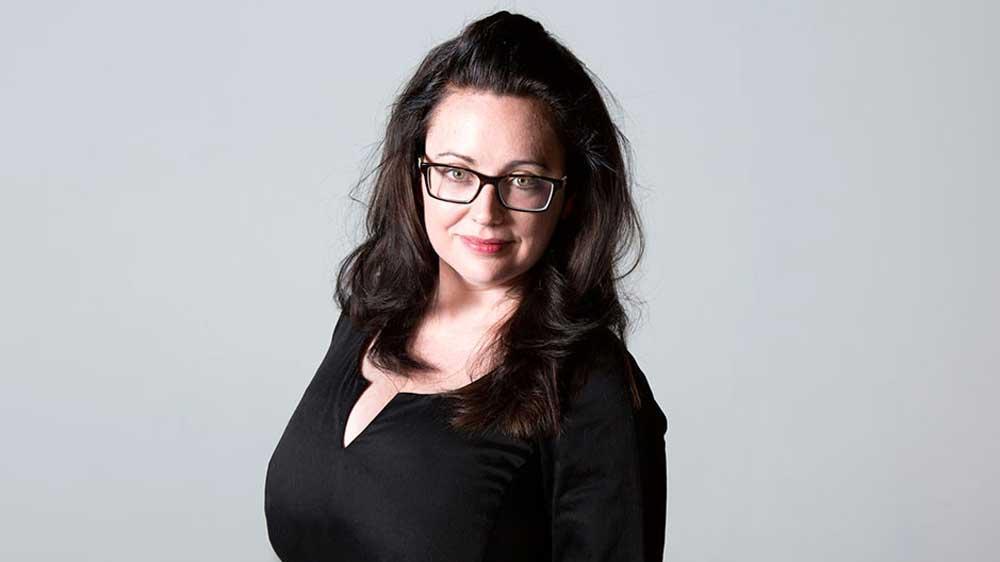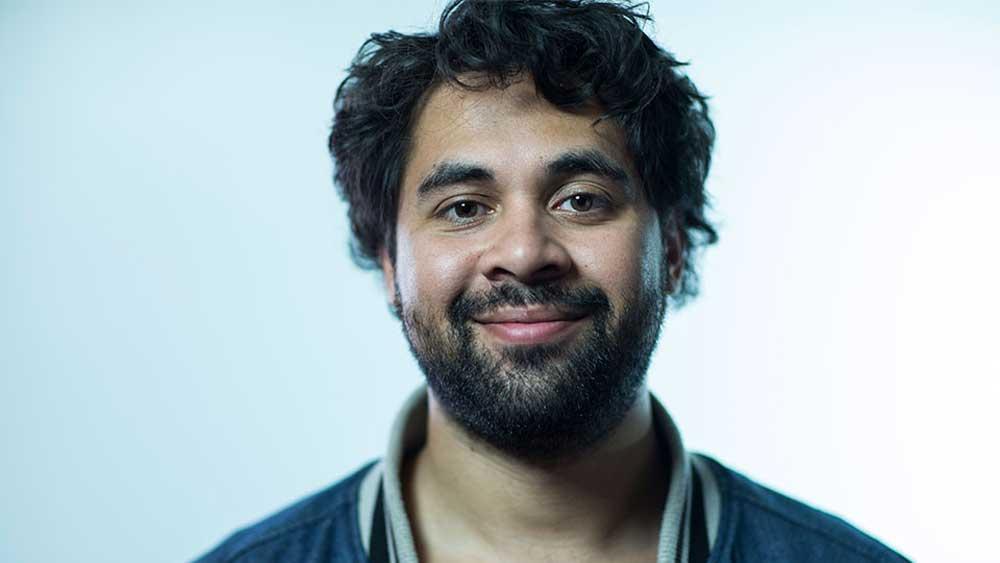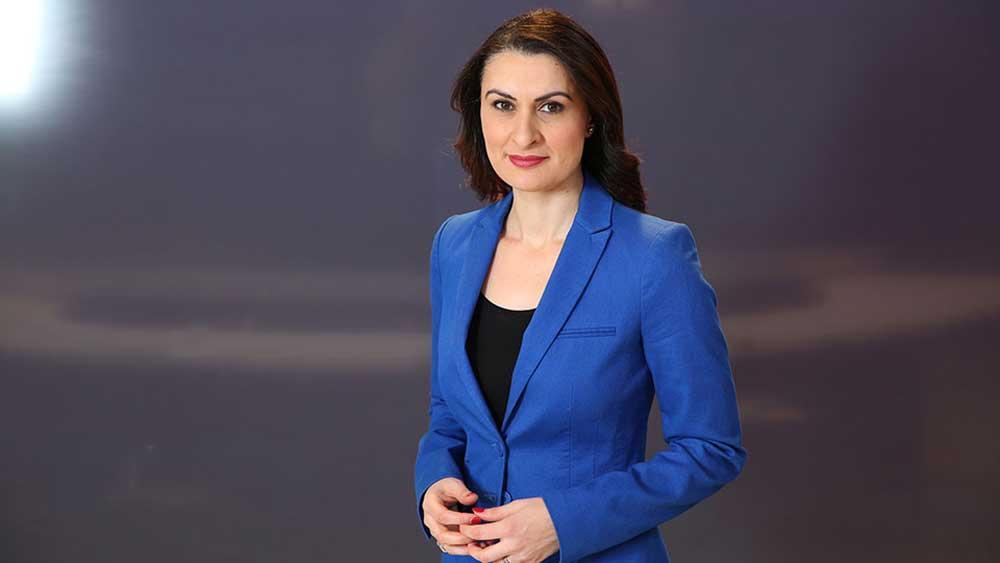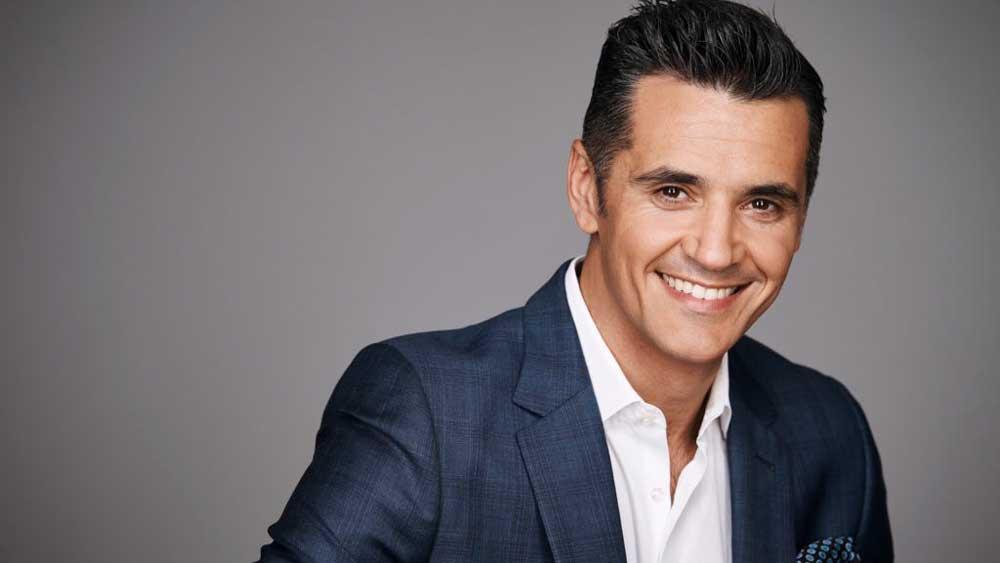Not so black and white
Media, diversity and equality
When I spoke to UOW alumna Van Badham, award-winning writer and columnist at The Guardian, however, it was clear she wasn’t getting your average stack of mail. Among the above landfill we all get, she was receiving abusive photos of gang rape. Plain envelope. No return address. Photos of gang rape.
The mail was a reaction to Badham calling out sexist comments on the ABC’s Q&A. An audience member posed a question to the panel about domestic violence. While responding Badham verbally sparred with a (older white male) panellist, and was eventually accused of “being hysterical”.
Without missing a beat she shot back: “It is probably my ovaries making me do it.”
The exchange quickly went viral. #MyOvariesMadeMe started trending on Twitter and the rest is history. Or at least, it became history for everyone except Badham, who still has to deal with violent and misogynistic threats on her Facebook wall, in direct messages, on YouTube videos, in the comments at the end of her articles, and of course, in her mailbox. Comments like, “f**k this fat bitch”, “sexually depraved feminazi tool”, “couldn’t get a root in a male prison”.
An online comment is one thing, but the effort required to physically send something – as in Badham’s case – scares me. The culprit(s) had to find their terrible picture, print it out – which no doubt involved a change of ink cartridge because those things are always empty – get an envelope, buy a stamp, find Badham's address, write it down and put it in a post box. And if something’s going to stir up more anger than a woman standing up for herself, lining up at the post office to buy a stamp is probably going to be it.
“They're trying to shut me down,” Badham told after relaying the story. “They’re actually trying to shift the status quo.”
The commenters, almost all men, are upset with what they believe is “political correctness gone too far”. Their comments suggest that they’re sick of talking about “diversity”, about having to self-censor, sick of hearing about domestic violence, of programs to promote diverse voices from different backgrounds.

Caption: Van Badham, photo credit: Pia Johnson;
Talking about media diversity and equality is hard. It often results in rolling eyes – or, as in Badham’s case, much worse – but it’s as relevant as ever. In just the last few months, for example, we had the Olympics, where a study from Cambridge University found that men were three times more likely to be talked about in a sporting context, while women were disproportionately associated with words like "aged, pregnant or unmarried”. The conversation around the appalling treatment of youth in Northern Territory detention centres was sidetracked by a deliberate and gratuitous provocation on Indigenous fathers. And then, of course, Badham’s Q&A incident.
What’s particularly frustrating for Badham, however, is that to some extent their campaign worked. A difficult conversation about domestic violence was hijacked.
“I'm getting swallowed into a discussion about f**kwits,” she said, “We’ve spent so much time talking about [Q&A] and Steve Price’s behaviour.”
That’s not to say that the industry hasn’t made significant improvements (albeit from a low base). The arrival of the internet completely ‘disrupted', to use an awful buzzword, the established publishers and broadcasters, forcing them to shift their business models on the fly. It has been discussed ad nauseam, but the internet resulted in a sort of media reboot: lowering barriers to entry, allowing for specialised content for varied audiences. And the more nimble media organisations found that creating content for specific audiences could be lucrative.
“It turns out the disruption of the old media industry … has been really great for diversity,” Badham told me.
“Publishers discovered a large market of women want to read commentary – what a surprise,” she said wryly. “And as we've transitioned to commentary, we’ve had to get more women in this space. We used to have about one article a week from a woman but now it’s much more balanced.”
But it’s not just economic factors contributing to these changes. There has been a concerted effort within the industry to have our screens become a more realistic reflection of our society.
A recently released Australian series called Cleverman, coming out of the ABC’s Indigenous Programs Unit, reflects this decision to have more diverse faces on Australian television. Created by Ryan Griffen, a self-professed fan of superheroes and genre storytelling, Cleverman is a six episode series that tells the story of an Indigenous superhero operating in a District 9-esque dystopian world. It mixes figures and creatures from Aboriginal mythology with decent budgets and contemporary storytelling. And it also has an interracial sex scene, which is particularly rare on Australian TV.
“The genesis of Cleverman came five years [ago while] playing … Ninja Turtles with my son,” Griffen wrote earlier this year, “... in that moment I suddenly wished we had something cultural – something Aboriginal – that he could cling to with as much excitement as he did with this.”
“I wanted to create an Aboriginal superhero that he could connect with, no matter what others said. I wanted a character that would empower him to stand and fight when presented with racism. Just like the old dreaming stories, Cleverman would be able to teach moral lessons; not only for my son, not just for Aboriginal people, but for many more out there as well.”

Like Griffen, Bjorn Stewart, a UOW alumnus and Aboriginal actor and comedian, has had success reaching new audiences on mainstream television. He was an actor in an ABC TV series called Black Comedy, a show designed to “undercut negative stereotypes and offer a refreshing new outlook on diversity.”
“Comedy offers (privileged *cough*) (white *cough*) people a way into a world they would not normally see everyday,” He told me over email, “ I don't think there are any easy wins – it’s a slow process – but the more PoC (People of Colour) that create art, the more it enriches Australian culture.
“I would love to see more PoC and LGBTI represented in our art institutions, theatre, galleries, film and television. The more of a platform we give to these artists – without being tokenistic – the more influence they have on Australian culture and media.”
The need to not be tokenistic – in this case around disability – similarly emerged while speaking to Jessica Smith, former paralympian, speaker, children’s author, and, of course, a UOW alumna.
“I don't necessarily think that we need to be talking specifically about 'experiences' or telling stories about the how and why someone has a disability. Rather, we simply [need to be] more inclusive in our discussions,” she said.
“I personally would like to see more representation of disability in mainstream media on topics that have nothing to do with disability. A disability should never get in the way of an individual's ability to be an articulate journalist.”
While everyone I spoke to was largely optimistic, there are more cynical views of “diversity” – particularly as it becomes a corporate HR buzzword.
Its become just another “box to check off”, Anna Holmes, founder of Jezebel.com, argued in the New York Times Magazine, “...small victories are often overenthusiastically celebrated as evidence of larger change.”
She uses the example of Viola Davis, who became the first African-American woman to win the Best Actress in a Drama Series Emmy, last year.
“The moment was cheered in the press as a triumph of racial equity in Hollywood,” she wrote. “But just a month before… a damning report from [researchers at the University of Southern California], studying gender bias in 700 films made between 2007 and 2014, lamented ‘the dismal record of diversity, not just for one group, but for females, people of color and the LGBT community.’”
“The few exceptions to this rule are consistently held up as evidence of more widespread change – as if a few individuals could by themselves constitute diversity.”
Bjorn Stewart is similarly cynical about consistent pledges to greater diversity. Despite the success of Indigenous content on the ABC and SBS, he still feels the mainstream media news does not adequately cover issues he cares about.
“I don't normally engage with television or mainstream media because it doesn't cater to my needs,” he told me.
“I usually outsource to independent news outlets online. Mass media doesn't speak to me so why should I continue to follow these dying mediums... In terms of current Indigenous issues in mainstream media, [important issues] are usually either misrepresented or the focus changes from the real conversation.”
He uses the example of the Don Dale scandal earlier in the year, which was a horrific and deeply disturbing investigation into youth, mostly Indigenous, detention in the Northern Territory.
“...the discussion [was shifted] from abusive crimes to Indigenous parenting, which completely negated the real issue.”
As in Badham’s case, the conversation had been hijacked: “The whole thing was, pretty much, a fail on mainstream media's part,” he said.
----
It’s worth mentioning that ‘diversity’ is not really a topic I’m particularly comfortable writing about. I’m the definition of Not At All Diverse Australia (NAADA, it’s a thing). I’m a tall, young, educated, white guy in an industry dominated by other white educated guys (of varying heights). I've never had to worry about being misrepresented. I’ve never turned on the TV and not seen people that looked like me, that spoke in the same way, or were in somewhat familiar circumstances.
But while I’m the picture of Non-Diversity, I’m also the exact picture of the average media worker in Australia’s newsrooms, agencies and content houses. PwC Australia recently released their 2016 Australian Entertainment and Media Outlook and it had some fascinating industry snapshots. The average media worker is a 27-year-old (check), caucasian male (check, check), lives in Sydney (check), most likely Newtown or Bondi (check mate). You know that stereotype of the Bondi Hipsters? Coffee-loving, media savvy beach rats wearing indie band jumpers? Well that's an uncannily accurate picture of someone working in media. It’s an annoyingly accurate picture of me. And I certainly don’t represent those playing at home.
We’re 27-year-old media ‘pros’ speaking to an average Australian that couldn't be more different. According to PwC’s report, the average Aussie is a woman, about 37-years-old, probably Catholic, likely has an ethnic background, and works in retail.

Caption: Gloria Kalache
“This is exactly what the ABC’s new Managing Director Michelle Guthrie was talking about in her first address to the ABC,” UOW alumna, and ABC journalist and Chief of Staff Gloria Kalache told me. “The stats tell us that the Australia that we're supposed to be representing is much more varied, and culturally rich – and we should be reflecting that.”
This industry ‘monoculture’, as it’s called, is a big problem. Aside from the numerous social implications, it’s also not good business. It limits our ability to reach diverse audiences both locally and overseas.
The same PwC report looked at annual media sector growth in developing Asian markets. India alone has a projected media sector growth of 10.4 per cent, while China is looking at 8.8 per cent and Indonesia a massive 13.2 per cent. During the same period Australia has a projected sector growth of just 4.1 per cent. And that’s largely because we haven’t positioned ourselves to benefit from the exploding markets on our doorstep. At the end of the day, our media too closely reflects those that make it.
“A lack of diversity in Australia’s media and entertainment workforce in terms of ethnicity, gender, age and thinking is dragging on the industry’s growth,” the report said.
The problem facing the industry is a human one. According to the PwC’s Media Outlook editor Megan Brownlow, “The research shows the lack of diversity is largely caused by two key factors: similarity attraction and unconscious bias”. In short, we are attracted to people who are like us.
The ABC’s Gloria Kalache reiterated this point: “People hire people that are like them. Not in every case, but certainly enough for it to be a problem. That’s why media organisations like the ABC and SBS are so important. They’re actively trying to combat that bias.”
PwC’s Brownlow agreed: “Lots of media companies haven’t been very sophisticated in their HR and recruitment practices. Too often it’s who do you know/call on your friends etc.”
An example of this mentality was on display earlier this year at a Sydney-based media agency. At the end of an interview, a potential employee was told that she wouldn't be suitable for the role because the team "already had two other Indian people" and – she says this is a direct quote – "the client might be alarmed by having three brown skin[ned] people attend a meeting".
The agency, in a classic non-apology apology statement, said that it was an “unfortunate misunderstanding”. The senior staff member “intended [for the remark] to set the person at ease”.
While Kalache has never had a similar experience, she has always been cautious about disclosing her religion – especially considering her gender and background.
“Coming from an ethnic background – my heritage is Lebanese and I'm Muslim – I entered the industry very guarded. Whether it was outright or not, you felt that people might judge you on your background.”
“And even being cautious I was still typecast,” she said, “People would ask me why I didn’t just go and work for SBS. It made sense, apparently. But it kind of backfired because a big part of me resisted fitting into these stereotypes.”
“There’s a lot less of that now though,” she says.
The recent Gold Logie win of prominent Australian commentator Waleed Aly, who also happens to be a Muslim, proves that “some diverse opinions and views are getting through.”
“In saying that,” Kalache adds, “there’s no doubt more needs to be done.”
----
While chatting to Van Badham about the horrible fallout of responding to casual sexism, I was in a café and my biggest issue at that moment was one of my mum’s friends at a table nearby trying to tell to me about aquajogging.
Midway through talking about how the internet, as a ‘disruptor’, had forced publishers to hire more women and start focusing on women’s issues, Badham stopped talking and asked me a question: “And what’s the one experience that’s universal to women?”
Initially I didn’t say anything, hoping her question was rhetorical.
“Is that a question?” I eventually, very tentatively asked.
And Badham was like, “Yep”.
My mind went into overdrive. And as the silence awkwardly lengthened, I blurted out, with an I-know-this-is-wrong inflection, “Is it a pressure to have babies?”
Badham quickly replied: “Not all women have children, you know.”
My heart froze.
“It’s sexism. Something that I can assure you is something that every woman has experienced.”
I immediately apologised. “I feel like an idiot,” I said.
But Badham was already good-naturedly laughing: “I’m not judging.”
And it was at this point that I knew that I was just another 27-year-old white guy trying to understand the experience of someone completely different to me. And despite good intentions, failing miserably. Is it hypocritical to be critical about the state of media diversity when the lack of it has directly benefited me? Is there someone out there with better marks, who’s more creative, who might even be taller, but who missed out on a job because their competition was more white and a man? No doubt.

Caption: Riocardo Goncalves
Why I embraced 'Ricardo' instead of 'Richard'
Ricardo Goncalves, SBS World News Australia Presenter and Finance Editor, gave an Australia Day Ambassadors Address this year. Ricardo republished this speech on LinkedIn in the wake of Waleed Aly's Gold Logie speech, where he spoke about ethnic names on television.
Below is an excerpt of the Australia Day Ambassadors Address, and we encourage you read the full speech.
I was born and grew up in Wollongong on the New South Wales South Coast … My [primary] school was extremely multicultural. Different looking faces the norm. As children, we didn’t see those differences. In saying that, for reasons still unknown to – me today, the teachers at my school called me Richard, instead of Ricardo.
'Richard' stuck with me for more than 20 years. I didn’t fight it. I didn’t think it was a big deal … As I got older, I guess I had developed an unconscious perception that by keeping this anglicised name, I’d be more successful, especially given I knew from a very young age that I wanted to work in an industry which didn’t have many coloured faces - television.
I’m not saying that’s what society told me to do, but it’s what I may have subconsciously felt I had to do … Truth be told, when I was offered my position at SBS in 2010, I was asked whether Richard was my real name. I took that opportunity to revert to my birth name, Ricardo, and the Portuguese pronunciation of my surname in all aspects of life, professional and personal.
Van Badham
Bachelor of Creative Arts (Creative Writing) (Hons) and Bachelor of Arts, UOW 2002
Ricardo Goncalves
Bachelor of Commerce (Marketing & Economics), UOW 2001
Gloria Kalache
Bachelor of Arts (Communication Studies), UOW 2002
Jessica Smith
Bachelor of Science (Population Health), UOW 2007
Bjorn Stewart
Bachelor of Creative Arts (Performance), UOW 2009
Nicholas Underhill
International Bachelor of Communication and Media Studies (Hons) (Journalism), UOW 2013